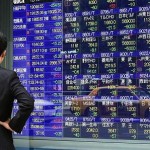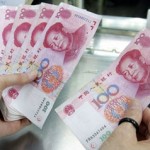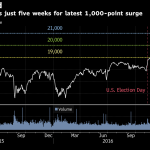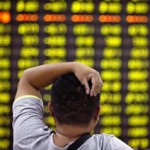Asia mostly lower as oil retreats further; BOK keeps rates steady
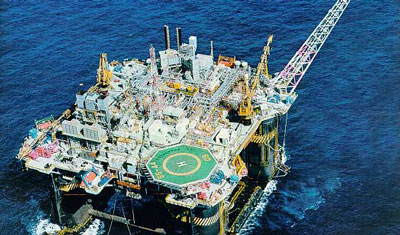
Asia markets were mostly lower on Thursday following U.S. losses, with sentiment likely driven by Wednesday’s oil price falls and anticipation of another data deluge from China on Friday.
In Australia, the benchmark ASX 200 slid 35.71 points, or 0.64 percent, to 5,508.00, with the heavily-weighted financials sub-index that accounts for nearly half of the broader index down some 1.17 percent.
New Zealand’s NZX 50 closed near flat at 7,353.83. In South Korea, theKospi traded 0.19 percent lower. Hong Kong’s Hang Seng index bucked the mostly downward trade to climb 0.75 percent.
Chinese mainland markets were mixed, with the Shanghai composite up 0.18 percent while the Shenzhen composite shed 0.41 percent. China is set to release data on industrial production, fixed asset investments and retail sales on Friday.
Japanese markets were closed for the Mountain Day public holiday.
U.S. stocks closed lower, with the benchmark S&P 500 dropping 6 points as the energy sub-index – the biggest laggard – dropped 1.4 percent.
Oil prices fell more than 2 percent on Wednesday in the U.S. session, amid renewed oversupply concerns.
During Asian hours on Thursday, U.S. crude futures slipped further by 0.17 percent to $41.64, while global benchmark Brent fell 0.11 percent to $44.00 a barrel.
Data from the U.S. Energy Information Administration (EIA) showed U.S. crude inventories rose by 1.1 million barrels in the week ended August 5, in a third consecutive weekly build, Reuters reported. Analysts polled by Reuters had expected a 1 million barrel drawdown.
“Oil is increasingly pulling back towards the $40 a barrel level again and many in the markets are concerned that the shorts may even be looking for prices to drop down towards the $35 level,” said Angus Nicholson, a market analyst at brokerage firm IG.
Adding to the supply glut concerns, OPEC’s largest producer, Saudi Arabia, is pumping record amounts of oil, while Iran is resuming production faster than expected, suggesting neither country is likely to entertain the idea of an OPEC deal to control production.
Meanwhile, New Zealand’s central bank cut its official cash rate (OCR) by 25 basis points to 2 percent on Thursday morning, in a move that was expected by market watchers, but some analysts said it wasn’t enough to satisfy the market.
“The OCR was cut but it was not enough to satisfy the market, with the New Zealand dollar up and rates selling off,” said economists Cameron Bagrie and Philip Borkin at ANZ Research. “Expectations were growing prior that we could see something substantial, but what we got was an entirely balanced and appropriate response in our view.”
“The Reserve Bank of New Zealand’s (RBNZ) policy assessment was similar to its special Economic Update just three weeks ago … but the changes that were made were of the dovish ilk,” Bagrie and Borkin said.
The New Zealand dollar traded higher against the greenback after the decision, reaching a session high of $0.7341, compared to levels near $0.7200 before. As of 2:02 p.m. HK/SIN, the Kiwi traded at $0.7249.
South Korea’s central bank kept the base rate unchanged at 1.25 percent. In its monetary policy statement, the Bank of Korea said the trend of economic recovery in the U.S. “has been sustained” and that China has maintained its “moderate pace of growth.”
The central bank said it expects the South Korean economy to sustain its trend of modest growth in the future, due to “expansionary macroeconomic policies.”
The Korean won weakened against the dollar; before the central bank’s decision was announced, the won traded as high as 1,093.00 before withdrawing to a session low of 1,103.00. As of 1:58 p.m. HK/SIN, the currency pair traded at 1,099.77.
Elsewhere, major Australian bank Westpac announced its stressed assets climbed by 12 basis points in the third quarter, reflecting a rise in mortgage delinquencies in regions affected by the mining slowdown. Impairment charges for the quarter were below the quarterly average for first half 2016.
Westpac’s announcement follows the Commonwealth Bank of Australia’s Wednesday earnings results where the CBA said its loan impairment expenses were up 27 percent for the full year 2016 due to higher provisioning for resource, commodity and dairy exposures.
Australian banks have been under pressure this year due to their exposure to the country’s resources sectors that have slumped, partly due to a slowdown in demand from key trading partner China.
Westpac shares were down 2.69 percent, dragging the other major banks lower. Commonwealth Bank of Australia slipped 1.94 percent,ANZ was down 1.01 percent and the National Australia Bank fell 1.04 percent.
In earnings news, Singapore Telecommunications said its first quarter net profit was steady at 944 million Singapore dollars ($702.68 million), marginally up from S$941.6 million from a year earlier. Singtel said mobile data and cyber security services were key growth drivers.
Singtel shares traded up 2.62 percent in afternoon trade.
Singapore also downgraded its 2016 economic growth forecast to 1 to 2 percent versus an earlier prediction of 1 to 3 percent growth, reported Reuters. This came after the southeast Asian economy expanded 0.3 percent in the April-June period from the previous three months, compared with the government’s advanced estimate of 0.8 percent, said Reuters.
In China, the yuan traded at 6.6406 against the dollar. The Chinese central bank set the yuan mid-point fix at 6.6255. The People’s Bank of China allows the yuan to move within a 2 percent band around the daily fix.
Thursday marked the one-year anniversary of China’s decision to shift the market mechanism for the setting of the yuan’s daily fix against the dollar, saying it would set the spot rate based on the previous day’s close, compared to the slightly more arbitrary fixing before. The decision rattled markets from Mexico to India and had sent the yuan tumbling.
Source: CNBC









